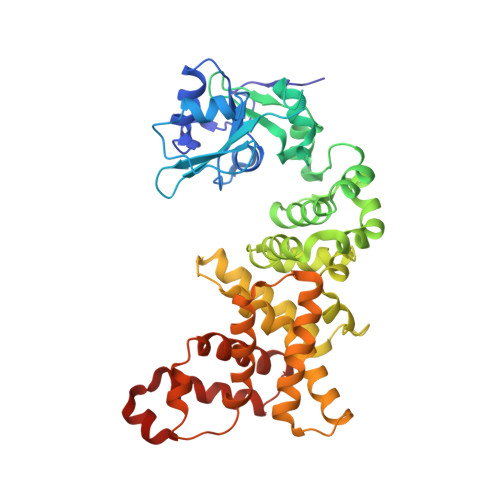Mechanism for the alteration of the substrate specificities of template-independent RNA polymerases
Toh, Y., Takeshita, D., Nagaike, T., Numata, T., Tomita, K.(2011) Structure 19: 232-243
- PubMed: 21300291
- DOI: https://doi.org/10.1016/j.str.2010.12.006
- Primary Citation of Related Structures:
3AQK, 3AQL, 3AQM, 3AQN - PubMed Abstract:
PolyA polymerase (PAP) adds a polyA tail onto the 3'-end of RNAs without a nucleic acid template, using adenosine-5'-triphosphate (ATP) as a substrate. The mechanism for the substrate selection by eubacterial PAP remains obscure. Structural and biochemical studies of Escherichia coli PAP (EcPAP) revealed that the shape and size of the nucleobase-interacting pocket of EcPAP are maintained by an intra-molecular hydrogen-network, making it suitable for the accommodation of only ATP, using a single amino acid, Arg(197). The pocket structure is sustained by interactions between the catalytic domain and the RNA-binding domain. EcPAP has a flexible basic C-terminal region that contributes to optimal RNA translocation for processive adenosine 5'-monophosphate (AMP) incorporations onto the 3'-end of RNAs. A comparison of the EcPAP structure with those of other template-independent RNA polymerases suggests that structural changes of domain(s) outside the conserved catalytic core domain altered the substrate specificities of the template-independent RNA polymerases.
Organizational Affiliation:
Biomedical Research Institute, National Institute of Advanced Industrial Science and Technology, 1-1-1, Higashi, Tsukuba-shi, Ibaraki 305-8566, Japan.















